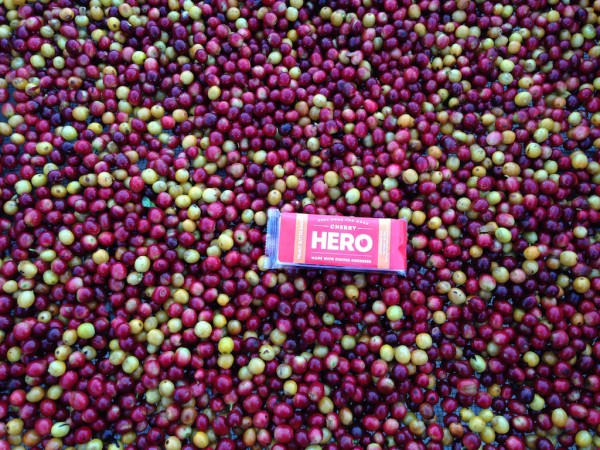In 2012, David Boyle met a group of Ethiopian coffee farmers while visiting Durban, South Africa. The farmers had relocated because they had been unable to make enough income from coffee farming to feed their families.
It was Boyle’s first educational lesson on the challenges of sustainable coffee farming and it set Boyle on a course that has led him to January’s launch of Cherry Hero, a healthy snack bar brand that uses coffee cherries as a primary ingredient and seeks to give back to coffee farming communities through wholesale purchases of pulp and a partnership with the nonprofit Food 4 Farmers.
We caught up with the 23-year-old entrepreneur, who describes his business as trying to make positive change in the lives of coffee farmers the “only weird way” he knows how.
For how long have the bars been on the market?
The bars have been on the market for 2 months now both online and at 4 different wholesalers. It is definitely still in the seed stages
When and how did you first learn about coffee cherries and their potential as a food ingredient?
The impetus for starting this company was a creative project to recreate and pay homage to the way coffee was first consumed, as a fruit, with the first ever “energy bar.” Ethiopian Warriors would wrap coffee cherries with clarified ghee and animal fat to sustain them on long voyages. For me, the journey that followed is the result of those findings in Mark Pendergrast’s book and my curiosity to explore further. Through research, I came through Kona Red and Bai5 and realized its potential as an antioxidant packed ingredient. I felt, however, that those companies were missing the point — that the coffee cherry could be used to tell another chapter in the amazing story of coffee, and be utilized by those at the forefront in specialty coffee, and not just be another health beverage at Costco.
Coffee fruit is not exactly prized as a delicacy. What else is in the bars and how do the ingredients work together?
We infuse the coffee cherries with fruit and nut bars. I received allot of feedback during the creation of the bars with good friends that are highly respected in the Crossfit and natural food worlds, and I went through the political and painstaking process of only using real food ingredients without any additives or sweeteners. It is true that there is sugar in the bar, but it is only natural sugar resulting from the dates and almond butter that act as the blending and forming agent for the nutrition bars. All of Cherry Hero’s bars have only 6 ingredients and aim to be a “clean-eating” experience without any of the weird ingredients that you can’t pronounce.
Can you share from where you are sourcing the discarded cherry pulp and mucilage?
As of now, I’ve been experimenting with sourcing coffee cherries from a multitude of farms. My main source is from Kona, where I’ve been tapping into some sustainable farming methods already put in place there. I’ve also been in contact with farms in Nicaragua doing some really great things. I have a great Cascara tea that I’ll be rolling out towards the end of the year from Nicaragua.
How do you reconcile the fact that this cherry stuff may be useful as potential compost to the very farmers you’re purporting to help?
Through some research, I have come to two conclusions. One being that coffee cherries are used as compost only because there haven’t been other ways to utilize them to their potential. This may seem like a crude analysis, but it was something I read word-for-word in a report done on Coffee Pulp Utilization by the Institute of Nutrition of Panama. Another research-based conclusion is that coffee pulp utilization is not a zero-sum game. In some cases, pulp is used for compost, but because of the high amount of byproduct, there is too much to use just for compost and other diversified sources of utilization also need to be found. Also, the ability to use coffee cherries as a diversified source of revenue gives the power back to the coffee farmer to decide whether he or she will either use it as compost or sell it as commodity, depending on the circumstances of that harvest.
Lastly, because coffee fruit has been scientifically proven to have all of these “superfruit” health benefits, it seems that we’re leaving untapped potential of the arabica plant on the table by only using them as compost and not as an edible source of plant polyphenols and antioxidants.
I’m 23 years old, trying to make a change in the only weird way I know how, and not in the business of doing any shady stuff. If it turns out that the coffee cherry utilization is hurting coffee farmers I would pivot my business completely.
Nick Brown
Nick Brown is the editor of Daily Coffee News by Roast Magazine.
Comment
2 Comments
Comments are closed.








Thai Akha Hilltribe farmers interested in supplying coffee cherries.
So proud of David & his mission to serve others – sweet idea!